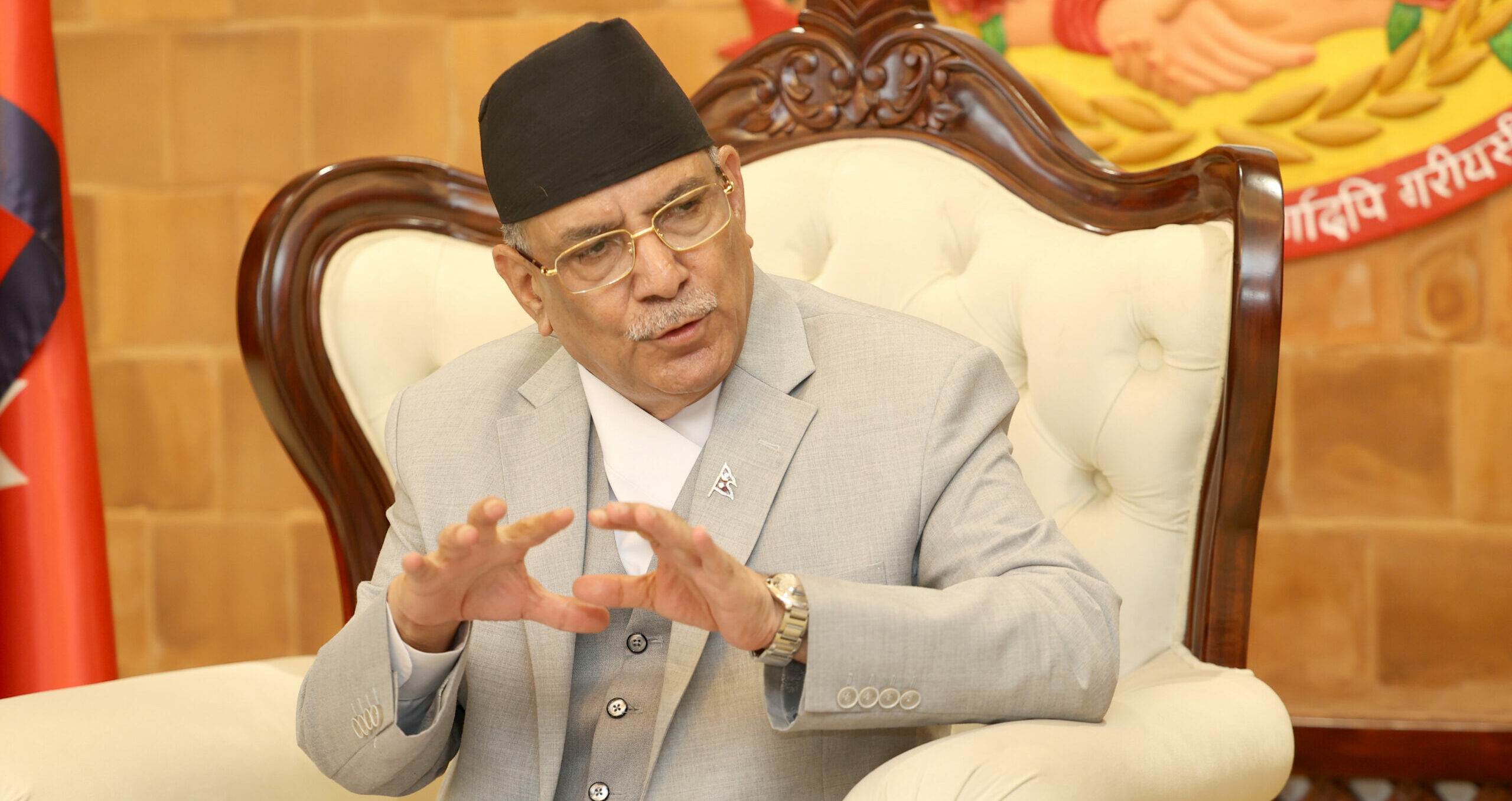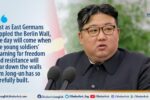Prime Minister Pushpa Kamal Dahal Prachanda’s “push doctrine” and ” Unraveling Disaster’ resonates as favorite terms in his vocabulary, embodying the essence of his ideology.
Shock, disaster, and leaps constitute the foundational principles of Prachandapath, a doctrine that, ironically, seems to be pushing Prachanda’s own government towards a looming disaster.
Unveiling the ‘Push Doctrine’
Delving into Prachanda’s ‘push doctrine,’ we encounter a dual perspective: First, his unique interpretation of Marxist-Leninist-Maoist philosophy, and second, the tactical maneuvers he has employed, encapsulated in the enigmatic ‘Prachandapath.’
This theory, born out of a decade-long armed conflict, is now ironically pushing Prachanda into a vulnerable position.
The Communist Mind Unveiled
Communists, as a rule, eschew trust in divinity, relying on their distinct set of rules to perceive and interpret events.
Their modus operandi involves navigating through the contradictions of opposing parties, drawing inspiration from Marx’s ‘three laws of dialectics.’
Prachanda’s mind operates on this basis, shaped by the principles expounded by Mao in his essay ‘On Contradiction.’
According to Marxist dialectics, events undergo quantitative changes before reaching a critical juncture where a qualitative leap occurs—a philosophy that guided Prachandapath during the People’s War.
In the pursuit of this theory, the Maoists, under Prachanda’s leadership, initiated a violent conflict in 2052 BS, believing that a forceful ‘push’ would trigger a calamity, propelling them into a new era.
The Collapse of the Shock Theory
However, the reality contradicted the theory. The attempt to force change through a ‘push’ proved detrimental during the 10-year People’s War, revealing that positive results do not emerge by flouting the laws of nature.
Despite being caught in a political maelstrom, Prachanda’s government remains standing, poised to collapse only with the formation of a compelling alternative alliance.
In the post-2006 peace process, Prachanda shifted from the ‘push principle’ to the pragmatic ‘deceive’ principle, focused on gaining and retaining power.
The ‘push doctrine resurfaced sporadically, not driven by a commitment to achieving specific goals or ideological change, but rather as a tool to safeguard and prolong his political authority.
This strategic shift raises questions about the compatibility of Prachanda’s ‘push theory’ with Marxist ideals, sparking theoretical debates.
The Unstable Premise of Power
The once-cherished ‘push theory’ of doctrine seems increasingly incongruent with the gradual development required for sustainable change.
The aftermath of the People’s War serves as a stark reminder that attempting to force revolution prematurely can lead to disastrous consequences.
Prachanda’s political maneuvering, seemingly grounded in the ‘push theory,’ now serves not the pursuit of transformative goals but the perpetuation of personal power.
Despite holding a mere 32 seats, Prachanda clings to the prime minister’s chair, raising critical questions about the longevity of his leadership in the face of mounting instability.
Prachanda’s Political Odyssey
In the first Constituent Assembly election, Prachanda adopted the strategy of ‘Constituent Assembly in the mouth, people’s rebellion in the mind.’ Ascending to the position of Prime Minister, his attempt to “push” Chief of Army Staff Rukmangad Katawal resulted in his own resignation, marking a disastrous turn.
Despite the post-peace process era, Prachanda remained haunted by the rebellious spirit.
However, this lingering discontent prompted key figures like Baidya and Biplav to distance themselves from his leadership.
The Maoist even initiated a campaign to besiege Kathmandu, advocated negotiating with the Madhav Nepal’s government, labeling it as puppets and peasants.
The Maoists, once the largest party, experienced a dramatic decline to the third position in the Second Constituent Assembly and further dwindled to 32 seats in 2079 BS.
In the 2074 BS elections, Maoists’ alliance with the CPN-UML was crucial for their success. The intervention of the Nepali Congress in 2079 BS averted a potentially similar outcome.
Prachanda’s strategy of aligning with the UML and forming fronts with the Congress when in trouble appears to be a tactical move, but it risks rendering his party increasingly unprincipled and weak over time.
While the main opposition party CPN-UML strongly critiques the government, it hesitates to take charge, potentially steering the country towards mid-term elections.
Presently, the party has fragmented into smaller factions, with Prachanda himself ensnared in a catastrophe he aimed to impose on others.
Internal voices within the Congress advocating for a break from the alliance signal a crisis of trust in Prachanda’s leadership.
Having spent a year in government without delivering effective results, discontent brews among the populace as the economy continues to decline, fostering a sense of ‘mass depression.’
Ironically, Prime Minister Prachanda, rooted in his push principle asserts plans to ‘push’ once again, despite the challenges.
His November 4th remarks at Singha Durbar, promising economic improvement through a renewed push, contrasts sharply with the prevailing sentiment of dissatisfaction among the people.
The irony persists as Prachanda remains committed to his lifeblood principle, despite mounting challenges and a crisis of trust in his leadership.
Prachanda’s Government: Teetering on the Brink
The Prachanda-led government hangs in the balance, eagerly awaiting a precarious blend of ‘thrust and disaster.’
Like a fragile green brick wall from the Rana era, one push could send Garlyamgurlum, symbolizing the government’s fragility, crumbling to the ground. The pressing question persists: why hasn’t it collapsed already?
This government, instead of addressing people’s concerns, has perpetuated a state of misrule, fostering discontent and rebellion among the populace.
Nepotism, corruption, and a focus on personal agendas have eroded public trust, leading to a mass exodus of businessmen.
Despite widespread dissatisfaction, the political equation remains vital. Prachanda, with support from the Congress, United Samajwadi Party, and JSP, feels secure in his majority.
Amidst the specter of a major disaster looming over the country, a recent Maoist officials’ meeting took an unexpected turn, diverting from serious political analysis to discussions about the Prime Minister’s family.
Sher Bahadur Deuba within the Nepali Congress lacks a formidable challenge, bolstered by internal divisions, as key leaders like Purna Bahadur Khadka assume ministerial roles.
Deuba anticipates a shift in power after one year of Prachanda’s rule, banking on internal rebellion within the Congress to sustain the government amid public discontent.
In response to public dissatisfaction, Prachanda dismisses it as a ‘monarchist’s conspiracy,’ employing a tactic reminiscent of the old ‘chamko principle,’ attempting to divert criticism away from the system.
While the main opposition party CPN-UML strongly critiques the government, it hesitates to take charge, potentially steering the country towards mid-term elections.
The opposition lacks a clear counter-alliance strategy, with uncertainties surrounding the role of RPP, and Rabi Lamichhane-led RSP.
RPP contemplates unity without entering the government, leaving their support for a new alliance uncertain.
The stance of RSP on potential alliances adds complexity to the political landscape.
The possibility of mid-term elections raises questions about the benefit to the country, prompting concerns about a perpetual cycle of elections.
While some suspect foreign influence in government changes, Prachanda’s current coalition is perceived as fulfilling the desires of a specific neighbor.
This quandary remains a subject of ongoing debate and scrutiny. Furthermore, the looming question of “Who after Prachanda?” lacks a clear-cut alternative, foreboding a potentially significant disaster on the horizon.
However, relying on creating chaos among neighbors for political stability risks isolating the government.
Prachanda faces growing threats of isolation and siege from both internal and external forces.
Despite being caught in a political maelstrom, Prachanda’s government remains standing, poised to collapse only with the formation of a compelling alternative alliance.
Simultaneously, the rising potential for public uprisings, possibly exploited by royalists, looms large.
In the absence of intervention, public discontent may escalate, mirroring the challenges faced in other nations like Sri Lanka.
The political fate of Prachanda’s government continues to hang in the balance, awaiting the next move in this intricate political chess game.
The Persistent Pursuit of “Push” Amidst Looming Disaster
Amidst the specter of a major disaster looming over the country, a recent Maoist officials’ meeting took an unexpected turn, diverting from serious political analysis to discussions about the Prime Minister’s family.
Adding to the intrigue, the Prime Minister made an announcement from the newly constructed hall in Singha Durbar, declaring, “Henceforth, I shall commence office at 10 am, focusing on delivering results for the upcoming year.” In essence, signaling a renewed commitment to pushing forward.
As the country grapples with uncertainty, the question lingers: Is there still optimism that the government led by Prachanda will act in the best interests of the people?
This quandary remains a subject of ongoing debate and scrutiny. Furthermore, the looming question of “Who after Prachanda?” lacks a clear-cut alternative, foreboding a potentially significant disaster on the horizon.









Comment